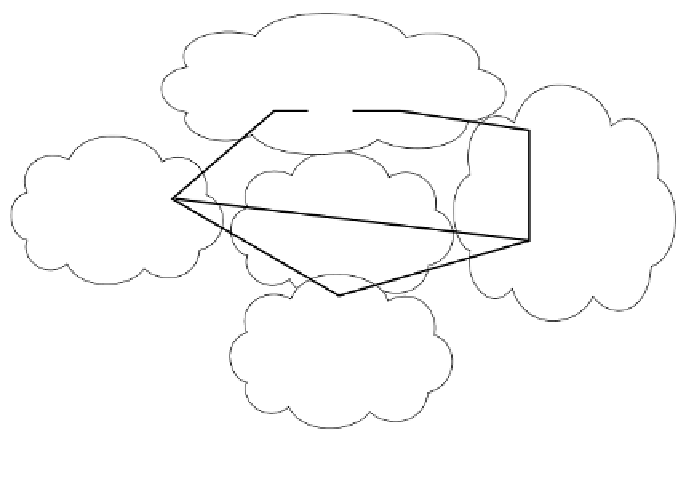Information Technology Reference
In-Depth Information
External BGP Core Architecture
The external BGP design primarily uses eBGP sessions between regions. A limited use of
iBGP may be employed if there are redundant core routers in each region. The primary
benefit of this architecture is the reduction of prefixes in the regional IGP processes and
delineation of administrative control. An example is shown in Figure 5-4.
Figure 5-4
Network Topology for External BGP Architecture
EIGRP 102
BGP 65102
R4
R6
R8
iBGP
eBGP
eBGP
EIGRP 103
BGP 65103
iBGP
EIGRP 101
BGP 65101
eBGP
R3
eBGP
eBGP
R9
R11
EIGRP 104
BGP 65104
Each region has two routing processes on the core routers: the regional IGP processes and
the core BGP processes. There is no core IGP process.
The regional IGP process provides reachability throughout the entire regional network.
This process carries full routing and topological information for the region. The regional
IGP process terminates on the core routers in this architecture. A default route should be
injected into the regional IGP process on the core routers.
This BGP architecture, although it has fewer sessions, is more complex than the previous
one. Each region is its own BGP AS. If a region has multiple core routers, they should be
connected via iBGP, using the regional IGP to provide next-hop resolution for iBGP learned
prefixes. It is essential that all routers providing transit between multiple core routers in a
region also run iBGP to prevent routing loops.
If iBGP sessions are used between core routers in a region, they should be sourced from a
loopback interface, with the loopback interfaces included in the regional IGP. To resolve
possible next-hop resolution issues, the iBGP sessions should be configured with
next-
hop-self
.






























